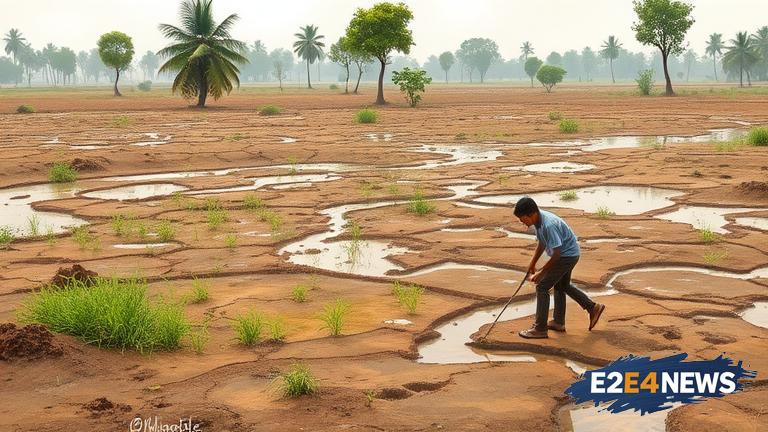The state of Assam, known for its lush green landscapes and abundant water resources, is facing a severe drought-like situation. The region has been experiencing a significant decline in rainfall, leading to water scarcity and affecting agricultural production. Farmers in the state are struggling to cope with the situation, as their crops are withering away due to lack of water. The drought-like conditions have also impacted the livelihoods of people dependent on agriculture, leading to economic hardship. The Assam government has been criticized for its inadequate response to the crisis, with many arguing that more needs to be done to address the issue. Experts have pointed out that the state’s water management practices are outdated and need to be revised to meet the changing climate conditions. The use of traditional irrigation methods, such as flood irrigation, has been identified as a major contributor to water waste. Moreover, the lack of water harvesting infrastructure has exacerbated the problem. The situation has also highlighted the need for crop diversification, as farmers have been relying heavily on traditional crops that are not resilient to drought. The government has announced plans to provide financial assistance to affected farmers, but many believe that this is not enough to mitigate the crisis. The opposition parties have been quick to criticize the government’s handling of the situation, demanding more concrete actions to address the issue. Meanwhile, environmentalists have warned that the drought-like conditions could have long-term consequences on the state’s ecosystem, including the loss of biodiversity and increased risk of wildfires. The situation has also raised concerns about the impact of climate change on the region, with many experts predicting that such events will become more frequent in the future. The Assam government has been urged to take a proactive approach to addressing the issue, including investing in water conservation measures and promoting sustainable agricultural practices. Furthermore, the need for a comprehensive drought management plan has been emphasized, which would involve the participation of all stakeholders, including farmers, experts, and policymakers. The plan would need to address the short-term and long-term consequences of drought, including providing support to affected farmers and implementing measures to prevent such situations in the future. In addition, the importance of raising awareness about the issue has been highlighted, as many people in the state are not aware of the severity of the situation. The media has been urged to play a more active role in highlighting the issue and promoting public awareness. The situation has also underscored the need for regional cooperation, as the drought-like conditions are not limited to Assam alone. Neighboring states, such as Meghalaya and Arunachal Pradesh, are also experiencing similar conditions, highlighting the need for a coordinated response to the crisis. Overall, the drought-like conditions in Assam have raised important questions about the state’s preparedness to deal with climate-related disasters and the need for sustainable water management practices. The situation demands immediate attention and action from the government, experts, and the public to mitigate the effects of the drought and prevent such situations in the future.
